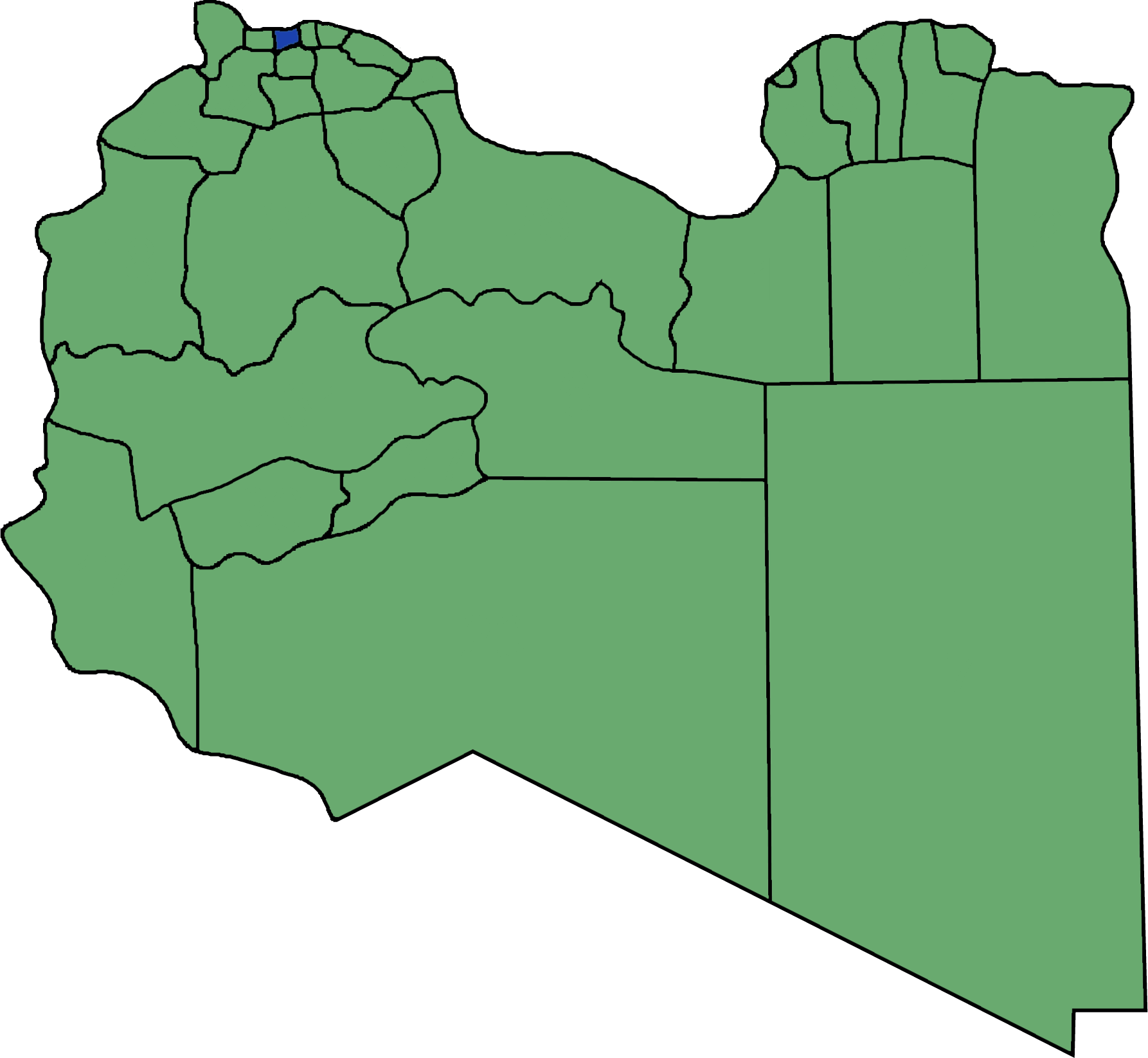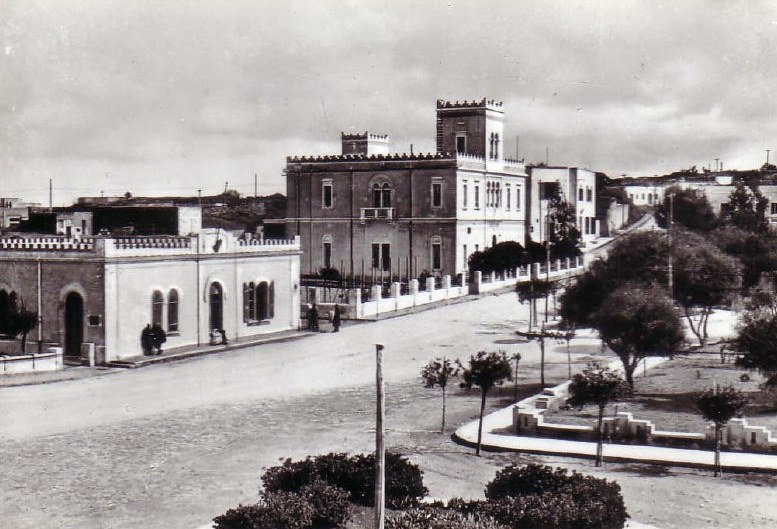|
Zawiya District
Zawiya, officially Zawia ( ar, محافظة الزاوية ''Az Zāwiya''), is one of the districts of Libya. It is located in the north western part of the country, in what had been the historical region of Tripolitania. Its capital is also named Zawia. the province of Az Zawiya has three major municipalities; according to the new laws of local governance, includes Central Az Zawiya municipality, Southern Az Zawia municipality and Eastern Az zawiya municipality. In the north, Zawiya province has a shoreline bordering the Mediterranean Sea, while it borders Tripoli in east, Jafara in southeast, Jabal al Gharbi in south, Surman in the west. Per the census of 2012, the total population in the region was 157,747. The average size of the household in the country was 6.9. There were totally 22,713 households in the district, with 20,907 Libyan ones. The population density of the district was 1.86 persons per sq. km. Geography In the north, Zawiya has a shoreline bordering the Med ... [...More Info...] [...Related Items...] OR: [Wikipedia] [Google] [Baidu] |
Districts Of Libya
In Libya there are currently 106 districts, second level administrative subdivisions known in Arabic as ''baladiyat'' (singular ''baladiyah''). The number has varied since 2013 between 99 and 108. The first level administrative divisions in Libya are currently the governorates (''muhafazat''), which have yet to be formally deliniated, but which were originally tripartite as: Tripolitania in the northwest, Cyrenaica in the east, and Fezzan in the southwest; and later divided into ten governorates. Prior to 2013 there were twenty-two first level administrative subdivisions known by the term ''shabiyah'' (Arabic singular ''šaʿbiyya'', plural ''šaʿbiyyāt'') which constituted the districts of Libya. In the 1990s the shabiyat had replaced an older baladiyat system. Historically the area of Libya was considered three provinces (or states), Tripolitania in the northwest, Cyrenaica in the east, and Fezzan in the southwest. It was the conquest by Italy in the Italo-Turki ... [...More Info...] [...Related Items...] OR: [Wikipedia] [Google] [Baidu] |
Libya
Libya (; ar, ليبيا, Lībiyā), officially the State of Libya ( ar, دولة ليبيا, Dawlat Lībiyā), is a country in the Maghreb region in North Africa. It is bordered by the Mediterranean Sea to the north, Egypt to the east, Sudan to the southeast, Chad to the south, Niger to the southwest, Algeria to the west, and Tunisia to the northwest. Libya is made of three historical regions: Tripolitania, Fezzan, and Cyrenaica. With an area of almost 700,000 square miles (1.8 million km2), it is the fourth-largest country in Africa and the Arab world, and the 16th-largest in the world. Libya has the 10th-largest proven oil reserves in the world. The largest city and capital, Tripoli, is located in western Libya and contains over three million of Libya's seven million people. Libya has been inhabited by Berbers since the late Bronze Age as descendants from Iberomaurusian and Capsian cultures. In ancient times, the Phoenicians established city-states and tradin ... [...More Info...] [...Related Items...] OR: [Wikipedia] [Google] [Baidu] |
Zawiya, Libya
Zawiya , officially Zawia ( ar, الزاوية, transliteration: ''Az Zāwiyaẗ'', it, Zauia or ''Zavia'', variants: ar, الزاوية الغربية ''Az Zawiyah Al Gharbiyah'', ''Ḩārat az Zāwiyah'', ''Al Ḩārah'', ''El-Hára'' and ''Haraf Az Zāwīyah''), is a city in northwestern Libya, situated on the Libyan coastline of the Mediterranean Sea about west of Tripoli, in the historic region of Tripolitania. Zawiya is the capital of the Zawiya District. Overview In the Libyan censuses of 1973 and 1984, the city counted about 91,603 inhabitants; it was then – and possibly continues to be today – the fifth largest city in Libya by population (after Tripoli, Benghazi, Misrata and Bayda). In 2011, Zawiya was estimated to have a population of about 200,000 people, most of whom were concentrated in the city. Zawiya has a university named Al Zawiya University, founded in 1988. There is also an oil field near the city and Zawiya has one of the two most important oi ... [...More Info...] [...Related Items...] OR: [Wikipedia] [Google] [Baidu] |
Vehicle Registration Plates Of Libya
Libya requires its residents to register their motor vehicles and display vehicle registration plates. Current plates are European standard 520 mm × 110 mm. Current Series Libya's current series of license plates entered circulation in 2013, after Libyan Revolution and the overthrow of Gaddafi. Numbers on license plates are in Latin Alphabet, and all plates carry the Arabic text ليبيا meaning ''Libya'', in Naskh Script, either on the right hand side or the right top corner. Private Vehicles Private vehicle license plates are black on white and follow the format ''# - 1 to 999999 The First number (#), a 1 or 2 digit number consists of a code corresponding to Municipality in Libya. This number is separated by a dash from the registration code, which can be 1 to 6 digits. In the city of Tripoli, due to its larger population, 7-digit registration codes are also issued. Foreigner-owned Private Vehicles Foreigner-owned Private vehicle license plates are black on ... [...More Info...] [...Related Items...] OR: [Wikipedia] [Google] [Baidu] |
Districts Of Libya
In Libya there are currently 106 districts, second level administrative subdivisions known in Arabic as ''baladiyat'' (singular ''baladiyah''). The number has varied since 2013 between 99 and 108. The first level administrative divisions in Libya are currently the governorates (''muhafazat''), which have yet to be formally deliniated, but which were originally tripartite as: Tripolitania in the northwest, Cyrenaica in the east, and Fezzan in the southwest; and later divided into ten governorates. Prior to 2013 there were twenty-two first level administrative subdivisions known by the term ''shabiyah'' (Arabic singular ''šaʿbiyya'', plural ''šaʿbiyyāt'') which constituted the districts of Libya. In the 1990s the shabiyat had replaced an older baladiyat system. Historically the area of Libya was considered three provinces (or states), Tripolitania in the northwest, Cyrenaica in the east, and Fezzan in the southwest. It was the conquest by Italy in the Italo-Turki ... [...More Info...] [...Related Items...] OR: [Wikipedia] [Google] [Baidu] |
Tripolitania
Tripolitania ( ar, طرابلس '; ber, Ṭrables, script=Latn; from Vulgar Latin: , from la, Regio Tripolitana, from grc-gre, Τριπολιτάνια), historically known as the Tripoli region, is a historic region and former province of Libya. The region had been settled since antiquity, first coming to prominence as part of the Carthaginian empire. Following the defeat of Carthage in the Punic Wars, Ancient Rome organized the region (along with what is now modern day Tunisia and eastern Algeria), into a province known as Africa, and placed it under the administration of a proconsul. During the Diocletian reforms of the late 3rd century, all of North Africa was placed into the newly created Diocese of Africa, of which Tripolitania was a constituent province. After the Fall of the Western Roman Empire in the 5th century, Tripolitania changed hands between the Vandals and the Byzantine Empire, until it was taken during the Muslim conquest of the Maghreb in the 8th cen ... [...More Info...] [...Related Items...] OR: [Wikipedia] [Google] [Baidu] |
Mediterranean Sea
The Mediterranean Sea is a sea connected to the Atlantic Ocean, surrounded by the Mediterranean Basin and almost completely enclosed by land: on the north by Western and Southern Europe and Anatolia, on the south by North Africa, and on the east by the Levant. The Sea has played a central role in the history of Western civilization. Geological evidence indicates that around 5.9 million years ago, the Mediterranean was cut off from the Atlantic and was partly or completely desiccated over a period of some 600,000 years during the Messinian salinity crisis before being refilled by the Zanclean flood about 5.3 million years ago. The Mediterranean Sea covers an area of about , representing 0.7% of the global ocean surface, but its connection to the Atlantic via the Strait of Gibraltar—the narrow strait that connects the Atlantic Ocean to the Mediterranean Sea and separates the Iberian Peninsula in Europe from Morocco in Africa—is only wide. The Mediterran ... [...More Info...] [...Related Items...] OR: [Wikipedia] [Google] [Baidu] |
Tripoli District, Libya
Tripoli District ( ar, طرابلس عروس البحر, ''Aros Al baher Ṭarābulus'') is one of the 22 first level subdivisions (''بلدية'') of Libya. Its capital and largest city is Tripoli, the national capital. Tripoli District is in the Tripolitania region of northwestern Libya. The district has a shoreline along the coast of the Mediterranean Sea in the north (Gulf of Tripoli), Zawiya in the west, Jafara in the southwest, Jabal al Gharbi in the south and Murqub in the east. Per the census estimates of 2012, the total population in the region was 157,747 with 150,353 Libyans. The average size of the household in the country was 6.9, while the average household size of non-Libyans being 3.7. There were totally 22,713 households in the district, with 20,907 Libyan ones. The population density of the district was 1,126 persons per sq. km. Geography The district has a shoreline along the coast of the Mediterranean Sea in the north (Gulf of Tripoli). On land it border ... [...More Info...] [...Related Items...] OR: [Wikipedia] [Google] [Baidu] |
Jafara
Jafara or Al Jfara ( ar, الجفارة ''Al Jifārah'') is one of the districts of Libya, in the historical region of Tripolitania. Its capital and largest city is 'Aziziya. Jafara borders Tripoli in northeast, Jabal al Gharbi in south and Zawiya in the west. From 2001 to 2007, Jafara District consisted of twenty Basic People's Congresses (BPCs). In 2007 it was enlarged by the addition of four BPCs from Tarabulus District (Tripoli), and presently consists of twenty-four Basic People's Congresses. Per the census of 2012, the total population in the region was 157,747, with 150,353 Libyans. The average size of the household in the country was 6.9, while the average household size of non-Libyans being 3.7. There were totally 22,713 households in the district, with 20,907 Libyan ones. The population density of the district was 1.86 persons per km2. Per 2006 census, there were totally 163,882 economically active people in the district. Geography Libya has mostly a flat undulat ... [...More Info...] [...Related Items...] OR: [Wikipedia] [Google] [Baidu] |
Jabal Al Gharbi District
Jabal al Gharbi or The Western Mountain ( ar, الجبل الغربي ''Al Ǧabal al Gharbi'', en, The Western Mountains) is one of the districts of Libya. It is named after the Nafusa Mountains. It was formed in 2007 from the former districts of Yafran, Gharyan and Mizda. From 1995 to 1998 Jabal al Gharbi also existed as a '' Baladiyah''. Jabal al Gharbi borders Sirte and Misrata to the east, Murqub to the northeast, Jafara and Zawiya to the north, Nuqat al Khams to the northwest, Nalut to the west, Tripoli to the north, Wadi al Shatii to the south and Jufra to the southeast. Per the census of 2012, the total population in the region was 157,747 with 150,353 Libyans. The average size of the household in the country was 6.9, while the average household size of non-Libyans being 3.7. There were totally 22,713 households in the district, with 20,907 Libyan ones. The population density of the district was 1.86 persons per km2. Per 2006 census, there were totally 104,584 ... [...More Info...] [...Related Items...] OR: [Wikipedia] [Google] [Baidu] |
Sorman
Surman ( ˈsɝːmən; also spelled Sorman or Serman; ar, صرمان , ṣurmān ) is a city in the former Tripolitania region in northwestern Libya, situated to the west of Tripoli on the Mediterranean coast. While it borders Sabrata in West, Yafren in south, Az zawia in the east and the southeast. With a population of about 90,000. The city has earned its place as one of the biggest hotspots of Libya in many trade areas. Libyan civil wars On 20 June 2011, during the first Libyan Civil War, NATO strikes in Sorman against what appeared to be civilian homes in a compound belonging to one of Muammar Gaddafi's associates, Khaled K. El-Hamedi, reportedly killed several civilians, including two children and their mother. NATO admitted carrying out an air strike on a military target in Sorman but denied civilian deaths. NATO issued a statement that said a precision air strike was launched against a "high-level" command and control "node" in the Sorman area. On 14 August, the ... [...More Info...] [...Related Items...] OR: [Wikipedia] [Google] [Baidu] |
Nuqat Al Khams
Nuqat al Khams ( ar, النقاط الخمس ''Nuqāṭ al Ḫams'') is one of the districts of Libya. It is in the northwest of the country, in what had been the historical region of Tripolitania. Its capital is Zuwara. Nuqat al Khams has a northern shoreline on the Mediterranean Sea. To the west, it borders the Medenine Governorate of Tunisia. Domestically, it borders the districts of Zawiya to the east, Jabal al Gharbi to the southeast, and Nalut to the southwest. Nuqat al Khams is a part of the Tripolitania geographical region of Libya. Per the census of 2012, the total population in the region was 157,747 with 150,353 Libyans. In total, there were 22,713 households in the district, with 20,907 households belonging to Libyans. The population density of the district was 1.86 persons per sq. km. The Al-Watiya Air Base is located here. Geography In the north, Nuqat al Khams has a shoreline on the Mediterranean Sea. To the west, it borders the Medenine Governorate of Tunisia ... [...More Info...] [...Related Items...] OR: [Wikipedia] [Google] [Baidu] |





